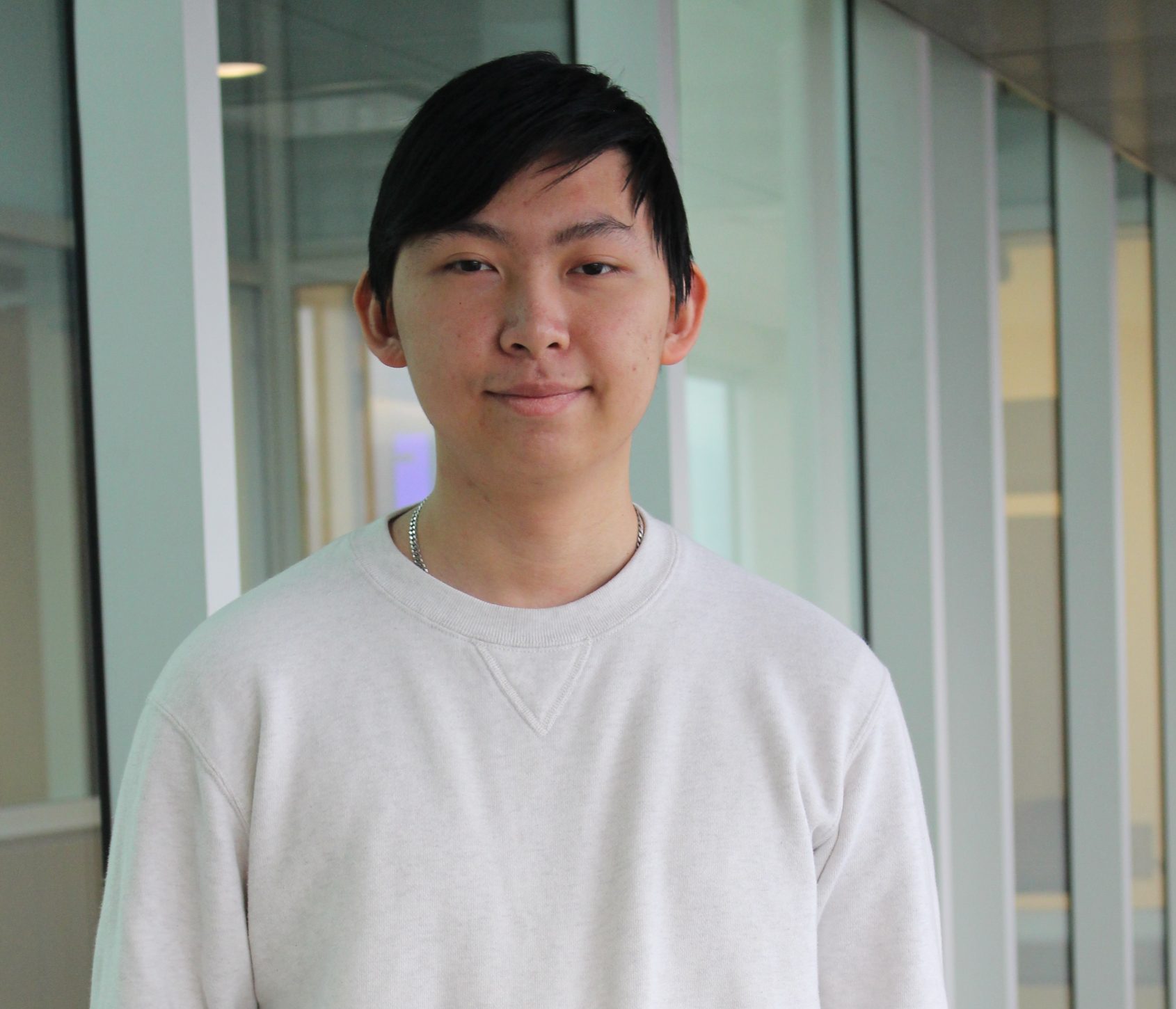
Musab Hassan with his custom keyboard.
Musab Hassan, a third-year electrical engineering student at UBCO, takes us on his design journey of how he built his own ergonomic keyboard. Hassan spent around four months designing and building a fully custom, aesthetic ergonomic keyboard designed to fit his hand shape, called the Aurora Keyboard. After using a regular keyboard, which caused him wrist pain during long typing sessions, he decided to embark on this project. Hassan designed everything from the PCB, case, layout, and firmware to fit his ergonomic needs. The keyboard has also been shared as an open-source project, allowing others to build their own versions or replicate the one he built. While he had no prior experience with creating something like this, a large portion of his time was spent studying relevant concepts such as ergonomics, keyboard layouts, and PCB design. Hassan went through half a dozen versions before reaching the one that felt polished. The final product ended up solving all of his typing problems and is now his de facto keyboard. In fact, when Hassan contacted us, he wrote his whole email without taking breaks—something he couldn’t do before! Let’s hear his story from his perspective.
The Inspiration Behind the Builder
I want other engineering students to be inspired by this to make their own real products, just like this project. I find the thrill and reward of seeing something I built from scratch in action to be incredible, and I want other engineers to experience that incredible learning opportunity. It also helps when the product you design works and integrates into your daily life. A lot of engineering projects just end up as one-off things, where you make them and then never use them again. I find the idea of making a real product different because it allows you to see how real products are made and to work out the quirks. That doesn’t mean you need a lot of knowledge to get started. In fact, I had zero idea about anything related to keyboard layouts, designs, or anything about keyboards in general. It was the design process that taught me these things, and that’s the beauty of building—you learn along the way. You just need to get started.
I had zero idea about anything related to keyboard layouts, designs, or anything about keyboards in general. It was the design process that taught me these things, and that’s the beauty of building—you learn along the way.
A Builder’s Beginnings
I have always been a builder. As a kid, I would tear apart old electronics just to see what was inside, fascinated by how things worked. That same curiosity led me to study electrical engineering at UBCO, hoping to turn my passion into something real—something I could use to understand and make the very things I used to open and break. But as the semesters passed, filled with exams, late-night study sessions, and endless assignments, I couldn’t shake the feeling that I was missing something. Engineering felt like just equations and theories—why wasn’t I using them to make something real? Why was I leaving everything in the classroom? I had to build something.
I could just make another project for a day, add it to my resume, and then forget about it, but that’s not what engineering is about. It’s about creating real solutions to real problems. So, I asked myself, what do I make? What could I create that wasn’t just another school project but something meaningful—something I would actually use every day? A meaningful addition to my life.
The answer was sitting right in front of me—literally. The most uncomfortable thing on my desk, something I use every day, something I use more than anything else I own—my keyboard. I use a keyboard constantly. I use it for assignments, taking notes, talking to friends, and even gaming. Yet, I had never given much thought to its design. Apparently, keyboards haven’t changed much since the days of the typewriter. How could I, as someone who uses it every day, finds discomfort in it, and knows that better designs exist, do nothing about it and just keep using it? What if I could build a better one, tailored perfectly to fit my hands? What if I made my own custom keyboard from scratch?
The Aurora Keyboard Project

Figure: Right view of the completed keyboard.
That idea sparked the journey to creating the Aurora Keyboard—a keyboard built for me. A keyboard molded for my hands, my posture, and my workflow. A keyboard I could type on for hours, then play games on, and then pack with me to take to class. A keyboard designed to maximize comfort, portability, and beauty. It had to be something perfect, something I could showcase as the ultimate magnum opus of my engineering skills. I didn’t want to just modify an existing design; I wanted to build something completely original, something I made with my own hands. After all, a keyboard is just a set of buttons wired together—how hard could it be?
It had to be something perfect, something I could showcase as the ultimate magnum opus of my engineering skills. I didn’t want to just modify an existing design; I wanted to build something completely original … After all, a keyboard is just a set of buttons wired together—how hard could it be?
It turns out, designing a keyboard from scratch is anything but simple. There is an overwhelming amount of information online about keyboard layouts, designs, ergonomics, electronics, and sizes. It also didn’t help that I knew basically nothing about any of those things. I needed a structured approach—a design methodology. I remember in my first-year design classes, we were taught how to approach design projects systematically. I started by defining my problem. I felt discomfort using my keyboard and wanted something that fit my hands. Then I started researching. I found keyboards shaped like balls, keyboards attached to chairs, keyboards the size of desks, and keyboards with only 10 keys and 15 combinations to get each letter. Which one do I pick? Do I make my own layout? How do I decide which one will work best for me? Every day, I would sit down and just learn about what a keyboard even was. Who knew a bunch of buttons on a PCB could be that complex?
After weeks of research, I started building. I started with the layout: What do my hands feel? I spent months refining the layout, researching ergonomic principles, testing them in my CAD models, 3D printing prototypes, then going back and making modifications. I tried traditional layouts, unconventional layouts, and layouts somewhere in between—learning which worked and which didn’t. Every misstep, every failed prototype, and every late-night debugging session reinforced the lessons I had learned in class.
Of course, challenges came with the process. Circuits didn’t always work as expected—my first printed circuit’s wiring was reversed. Components didn’t fit together perfectly—I ordered the wrong batteries, and my case designs printed incorrectly. Design choices had to be rethought as I redesigned the layout multiple times. But with each obstacle, I learned something new. Slowly, piece by piece, my CAD model started turning into a real object—a real device, something I could hold with my two hands. When I finally assembled the final version—carefully soldering each connection, testing every key, and tightening every screw—I felt a satisfaction I had never felt before. It turned out exactly how I had imagined it many months ago.
Sharing the Journey
What happened next was something I didn’t anticipate. I decided to share my project online and release all my work as an open-source project. I wrote a build guide to help others who were inspired by my design if they wanted to build their own version. I then posted about it on Reddit, and the response was overwhelming. People from around the world were inspired by my design, offering encouragement, feedback, and even building their own versions. Seeing my work inspire others was an incredible feeling—it reminded me why I love making things—not just for myself, but to be part of a community of creators.
People from around the world were inspired by my design, offering encouragement, feedback, and even building their own versions.
Reflecting on the Experience

Figure: Left view of the completed keyboard.
This project has been a defining experience in my time at UBC. While my courses have given me a strong foundation, it’s hands-on projects like my Aurora Keyboard that have truly brought engineering to life for me. This project reminded me why I am studying electrical engineering, why I chose to push through the long nights of endless assignments. Because the end goal is just too tempting not to experience. Maybe one day I will turn this project into a real product—a keyboard you can buy online. A product built with a labor of love. A product born from curiosity, persistence, and a willingness to try something new.
This project has been a defining experience in my time at UBC. While my courses have given me a strong foundation, it’s hands-on projects like my Aurora Keyboard that have truly brought engineering to life for me. This project reminded me why I am studying electrical engineering, why I chose to push through the long nights of endless assignments.

 Rosine Izerumukiza is a third-year civil engineering student, passionate about sustainable growth and community- centred designs. She is currently working as the International Peer Advisor for the School of Engineering, assisting International admitted students navigate campus life. Rosine is the project manager for the Innovate Design and Sustain Club- Solar Decathlon Team, and w
Rosine Izerumukiza is a third-year civil engineering student, passionate about sustainable growth and community- centred designs. She is currently working as the International Peer Advisor for the School of Engineering, assisting International admitted students navigate campus life. Rosine is the project manager for the Innovate Design and Sustain Club- Solar Decathlon Team, and w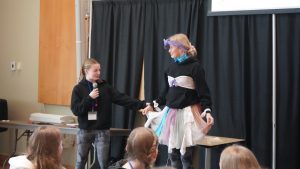
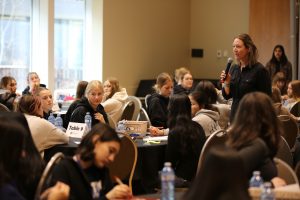
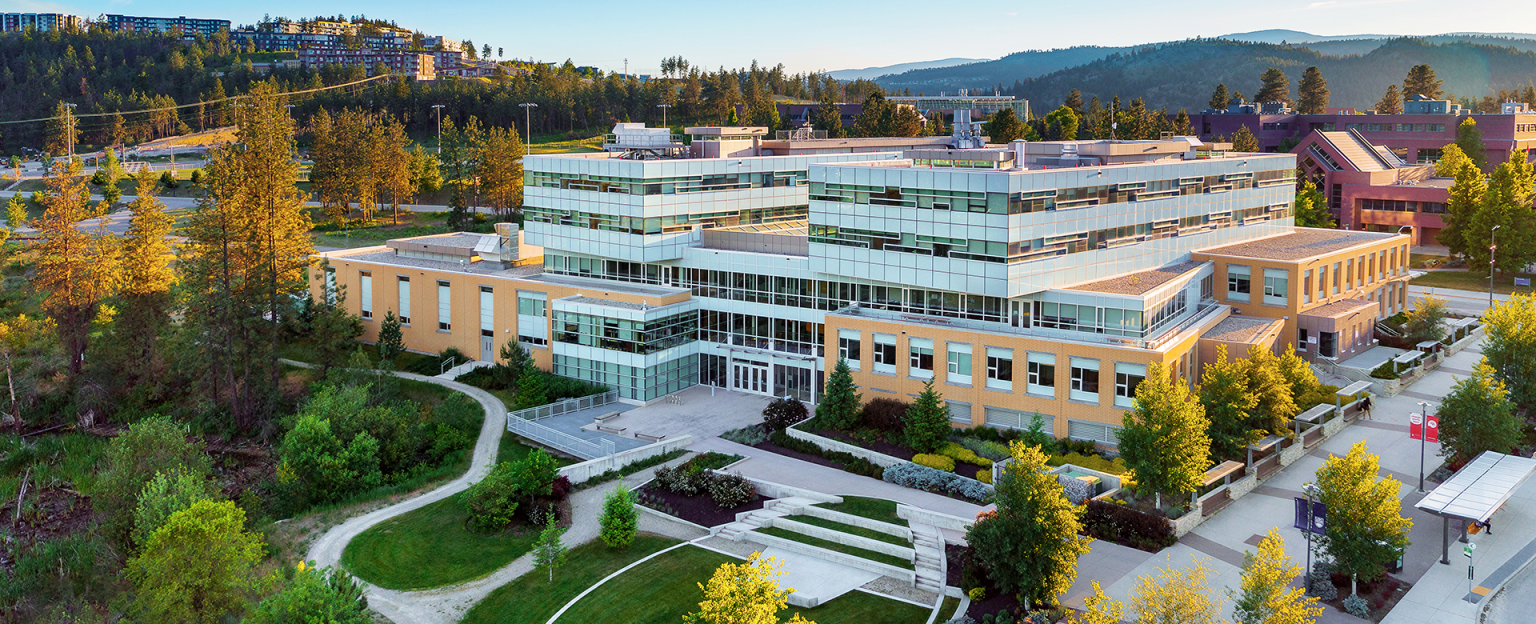
 The increasing demand for energy storage in recent years requires higher energy of lithium-ion batteries (LIBs). The recent development of electrode materials, such as layered oxide cathodes and Si based anodes, with high theoretical capacity and appropriate working voltage, creates great potential to meet the requirements for higher energy density. However, the development of high-energy electrode materials has been plagued by their persistent surface degradation and structural fatigue issues in batteries. Layered oxide cathodes experience abrupt strain accumulation caused by inherent anisotropic lattice changes, leading to the generation of intergranular and intragranular cracking. Moreover, their intrinsic high reactivity with electrolyte at the highly delithiated state suffers from serious surface reconstruction, including interfacial side reaction and phase transition. In terms of the anode, large volume change and deteriorated solid-electrolyte interphase of Si anode result in the pulverization of Si particles the increase in cell impendence. This talk mainly concentrates on the advanced interface design to tackle the challenges of high-energy electrode materials for next-generation batteries.
The increasing demand for energy storage in recent years requires higher energy of lithium-ion batteries (LIBs). The recent development of electrode materials, such as layered oxide cathodes and Si based anodes, with high theoretical capacity and appropriate working voltage, creates great potential to meet the requirements for higher energy density. However, the development of high-energy electrode materials has been plagued by their persistent surface degradation and structural fatigue issues in batteries. Layered oxide cathodes experience abrupt strain accumulation caused by inherent anisotropic lattice changes, leading to the generation of intergranular and intragranular cracking. Moreover, their intrinsic high reactivity with electrolyte at the highly delithiated state suffers from serious surface reconstruction, including interfacial side reaction and phase transition. In terms of the anode, large volume change and deteriorated solid-electrolyte interphase of Si anode result in the pulverization of Si particles the increase in cell impendence. This talk mainly concentrates on the advanced interface design to tackle the challenges of high-energy electrode materials for next-generation batteries.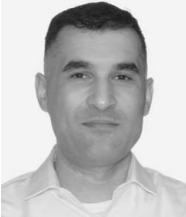 Ricardo Brites, (Eng.°, PhD) is a seasoned Structural Engineer boasting over 15 years of expertise in Holistic Design for Manufacture and Assembly of Mass Timber Structures across Europe and North America with over 100 delivered Mass Timber projects. His proficiency in Structural Design adhering to both European and North American Standards positions him at the forefront of significant projects. Notably, during his tenure in the UK, Ricardo served as the Associate Lead for the Engineering team at Eurban to deliver award-winning mass timber projects, including the world’s largest Mass Timber Structure in Singapore and two recent recipients of the UK’s prestigious RIBA Sterling Prize.
Ricardo Brites, (Eng.°, PhD) is a seasoned Structural Engineer boasting over 15 years of expertise in Holistic Design for Manufacture and Assembly of Mass Timber Structures across Europe and North America with over 100 delivered Mass Timber projects. His proficiency in Structural Design adhering to both European and North American Standards positions him at the forefront of significant projects. Notably, during his tenure in the UK, Ricardo served as the Associate Lead for the Engineering team at Eurban to deliver award-winning mass timber projects, including the world’s largest Mass Timber Structure in Singapore and two recent recipients of the UK’s prestigious RIBA Sterling Prize.